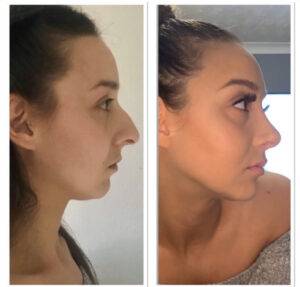Septorhinoplasty is a plastic surgery procedure that involves the straightening of cartilage and bone in the septum and other areas of the nose. It aims to remove obstructions and enhance airflow in the nasal cavities. In addition to improving airways, septorhinoplasty can also address any existing crookedness and enhance the outer shape of the nose. It is commonly performed alongside rhinoplasty to further improve the nose’s appearance and alignment. It is important to note that septorhinoplasty differs from septoplasty, which focuses solely on treating deviated septums.

If you have any questions then please get in touch, one of our team will be happy to answer any questions you may have. If you want to know more about a Septorhinoplasty, then please read on.
To see Dr. Frati’s work, visit our Nose Job before and after page
What is Septorhinoplasty?
Septorhinoplasty is a reconstructive plastic surgery procedure designed to address breathing difficulties caused by nasal shape abnormalities. It combines septoplasty, which focuses on straightening the nasal septum, and rhinoplasty, which corrects the external appearance of the nose. During the procedure, incisions are made in both the outer and inner nose, allowing the surgeon to modify or reposition bone and cartilage. The surgery typically lasts up to two and a half hours. After septorhinoplasty, patients can expect nasal swelling for several weeks, but breathing difficulties should improve within two to three weeks. Most individuals can resume work within one to two weeks.
What are the benefits of Septorhinoplasty?
Septorhinoplasty offers numerous benefits, including increased self-confidence and self-esteem, significant improvements in both the aesthetics and function of the nose, improved breathing during exercise and speech, enhanced comfort while sleeping, reduced nose size with a more sculpted shape, and restored facial balance. The Harley Medical Group provides comprehensive aftercare packages and flexible finance options. While septorhinoplasty is an effective solution for correcting a crooked septum, it’s important to understand that achieving an attractive appearance often involves balancing symmetry. The highly qualified surgeons and nursing staff at The Harley Medical Group are available to assist you in determining if surgery is the most suitable approach to achieving your goals.
Septorhinoplasty recovery and aftercare
The primary objective after surgery is to facilitate rapid healing and minimise swelling. This can be achieved by consistently wearing the splint for two weeks immediately after the operation. Afterwards, applying tapes at night can help further reduce swelling. Your doctor will prescribe appropriate anti-swelling medication and painkillers. Additionally, cooling the cheek area daily with a wet compress is recommended. Keeping the upper body elevated promotes blood flow and proper breathing.
It is important to avoid bending over, lifting heavy objects, and participating in strenuous physical activities or workouts. Typically, most patients can resume their normal activities within one to two weeks after surgery.
Septorhinoplasty potential risks and complications
While medical risks and complications after septorhinoplasty are uncommon, it’s important to recognise that all surgical procedures carry some level of risk. Potential risks include rare occurrences of secondary bleeding, which should be promptly reported to your doctor. Nasal swelling is expected to diminish within the initial weeks following surgery.
Post-surgery, breathing improves, and the senses of smell and taste return to normal. Scars typically heal without leaving visible marks, and any bruising around the eyes should completely fade within two weeks. Minor swelling may persist for up to a year after the procedure.
How long does Septorhinoplasty take?
The duration of a septorhinoplasty procedure can vary depending on several factors, including the complexity of the case, the surgeon’s experience and technique, and any additional procedures being performed. On average, a septorhinoplasty surgery typically takes approximately two to four hours to complete. However, it’s important to note that the actual time can vary for each individual. During a consultation with a qualified surgeon, they will be able to provide a more accurate estimate based on your specific case and any unique considerations involved.
Septorhinoplasty with Dr. Frati
If you wish to learn a little more about the type of Rhinoplasty services the famous Dr. Frati offers, or any other cosmetic needs then please don’t hesitate to get in touch with our friendly team. You can fill in a contact form, email us on info@dr-frati.com or call our numbers below depending on which part of the country you would like to visit our clinic.
If you require our Rhinoplasty London Service call 020 3633 2619
If you require ourRhinoplasty Manchester Service call 0161 327 2139
We look forward to hearing from you! Please read our FAQs below to learn even more about Septorhinoplasty.
What is the difference between septorhinoplasty and septoplasty?
Septoplasty focuses solely on correcting a deviated septum to improve nasal airflow, while septorhinoplasty combines septoplasty with aesthetic changes to enhance the external appearance of the nose.
Will septorhinoplasty completely resolve breathing difficulties?
Septorhinoplasty aims to improve nasal airflow and address breathing difficulties caused by a deviated septum and other structural issues. While it often leads to significant improvement, individual results may vary depending on the specific case
Can septorhinoplasty change the appearance of the nose?
Yes, septorhinoplasty not only corrects functional issues but also allows for aesthetic improvements. Surgeons can reshape and refine the nose, addressing concerns such as a hump, tip shape, or overall symmetry.
How long should I wait before seeing the final results?
It can take several months for the nose to fully heal and for the final results to be visible. During the healing process, the swelling subsides gradually, revealing the improved appearance and function of the nose.
Are there any age restrictions for septorhinoplasty?
Septorhinoplasty can be performed on individuals who have reached skeletal maturity, typically around the age of 16 for females and 18 for males. However, age limitations may vary based on individual circumstances
